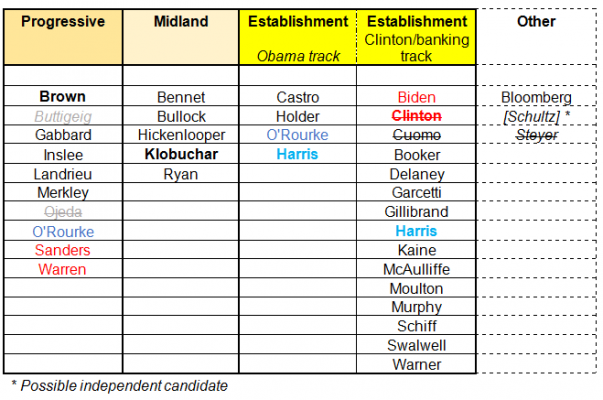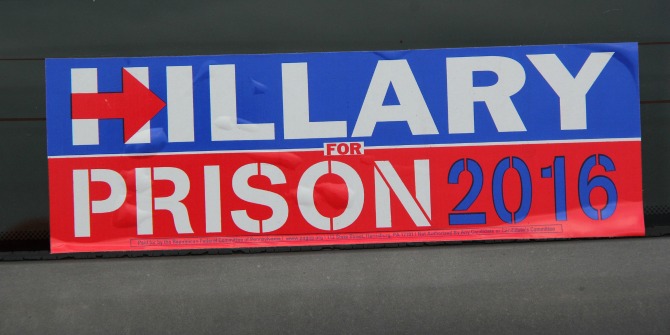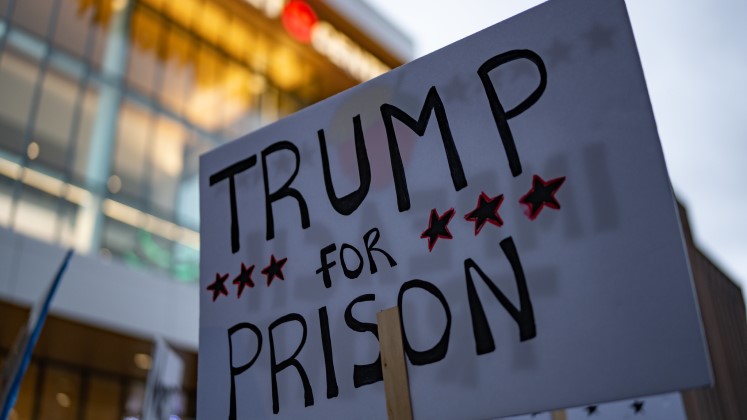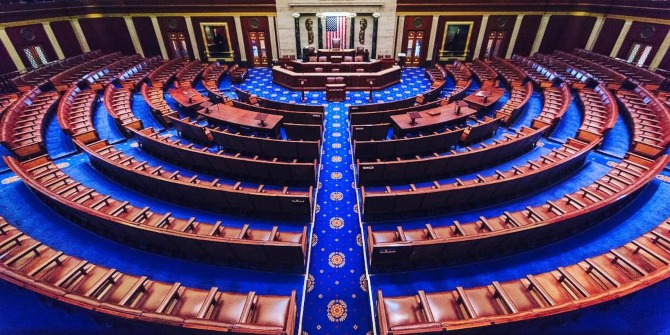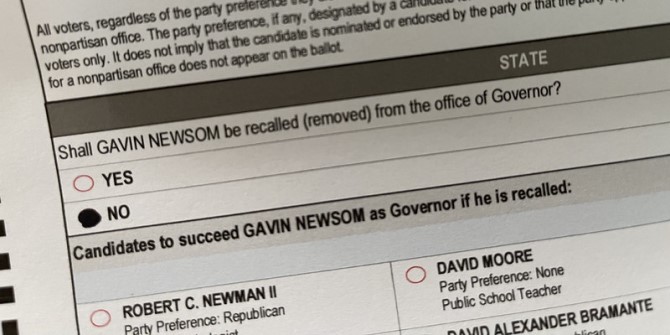 Almost a year before any primary or caucuses take place, there are dozens of potential candidates for the Democrats’ 2020 presidential nomination. In his first of two articles focusing on the Democratic contest, David Wise sorts through the potential contenders, classifying them as Establishment, Progressive or Midland candidates. He argues that changes to the primary process mean that we will almost certainly know who the Democratic nominee will be after Super Tuesday on March 3rd, 2020.
Almost a year before any primary or caucuses take place, there are dozens of potential candidates for the Democrats’ 2020 presidential nomination. In his first of two articles focusing on the Democratic contest, David Wise sorts through the potential contenders, classifying them as Establishment, Progressive or Midland candidates. He argues that changes to the primary process mean that we will almost certainly know who the Democratic nominee will be after Super Tuesday on March 3rd, 2020.
Whether the American public wants it or not, the 2020 presidential campaign is now upon us. Even before the midway mark of the current presidential term several candidates had already announced their intention to run for that office. Contrary to the vision of the founders, America’s political system is now characterized by a perpetual campaign of jockeying for position and fundraising for reelection almost as soon as the results of the prior election have been posted. The horse race coverage of politics that passes for journalism and the 24-hour news cycle and cable TV and talk radio echo chambers intensifies this dysfunction. In the past twenty years campaigning and gamesmanship have crowded out governing and sound debate of public policy, as the most recent government shutdown testifies.
At the risk of (possibly valid) criticism that this piece is itself a form of race track tip sheet, the fact that the nominating process has now begun requires that those who are interested in public affairs pay attention. The number of potential candidates that have expressed a serious interest in pursuing the nomination of the Democratic Party now stands at at least 35 names, of which 30 have not yet taken themselves out of the running as of this writing. But how might the 35+ potential candidates get winnowed down to one by the time of the Democratic convention in July 2020?
The nominating process will not be a battle royale of all 30+ candidates against each other. There will be a series of mini-selection events along the way. Each candidate competes initially for support and funding from specific wings of the party. From this early process emerges a more limited number of candidates (think in terms of the number of podiums that can be assembled on one stage for the initial debates) and then over a short series of months possibly two main contenders compete for the prize.
The wings of the party are as follows:
The Establishment
These candidates are aligned with the party hierarchy (think the class of Superdelegates at the most recent convention) and who have good relationships with the major donors (the New York financial and Silicon Valley tech elites). In 2016 this wing of the party was represented by Hillary Clinton who had the backing of the then Democratic National Committee (DNC) Chair Congresswoman Debbie Wassermann Schultz who helped stack the deck, such as the debate schedule, in Clinton’s favor. Since 2008 one could argue that a subset of the Establishment wing path to the nomination has been created by Barrack Obama who crafted a unique coalition of voters and who relied less on large donors until he secured the nomination. A New Yorker article described this Obama track, as “a liberalism that navigates between” the progressive and the centrists.
Although ostensibly an “outsider” Obama was gradually adopted as part of the Establishment by virtue of being asked to deliver his stirring keynote address to the 2004 Democratic National Convention and then by the laying on of hands by (Senator) Ted and Caroline Kennedy who pronounced him a worthy person to carry the torch of JFK.
The establishment candidate has won the nomination in 2016, 2004, 2000, 1984, 1980 (contested incumbent) and 1972. Incumbents ran uncontested in 2012 and 1996 when they were the de facto establishment candidates.
The Progressive Wing
Until the centrist Democratic Leadership Council candidacy of Bill Clinton in 1992, the progressives were the establishment, with compromises made to placate the Southern wing of the party. Southerners gradually defected to the Republican Party starting with Strom Thurmond’s “Dixiecrat” walkout from the 1948 Democratic Convention when a civil rights plank was adopted as part of the party’s platform. This shift accelerated with the “Southern Strategy” employed by Richard Nixon in 1968 and has carried on as leitmotif in every Republican candidate ever since.
As the party establishment moved away from its working class, labor union past towards large financial industry donors under the Clintons, a new strain or progressivism https://www.mcclatchydc.com/latest-news/article211614189.htmlappeared in the 2004 campaign of Howard Dean who proudly declared that he represented the “Democratic Party wing of the Democratic Party.” His short-lived but breakthrough campaign was based on the small donors acquired online and which set in a formula that every Democratic candidate has emulated since. The progressive wing has not won the nomination for 28 years (since Dukakis in 1988), but it was a major driving force in the last campaign when Hillary Clinton and Senator Bernie Sanders squared off in 2016. Sanders may have lost the nomination, but his ideas have now become the standard under which almost every candidate will run in 2020.
Howard Dean and Senator Bernie Sanders are both from Burlington, Vermont and in some ways the Progressives are “Burlington Democrats.” The one caveat here is whether to classify George McGovern, the 1972 nominee, as a progressive candidate. McGovern certainly swung the party to the left, but the fact that he chaired the DNC’s McGovern-Fraser Commission that created the rules and structure for the current patchwork of caucuses and primaries that exist today qualified him as the Establishment candidate. Setting the rules is the very definition of the establishment.
Midland
Both the Establishment and Progressive wings of the Democratic Party tend to be comprised of affluent, educated “coastal” elites from Washington to Boston on the east coast and Seattle though Silicon Valley to Los Angeles on the west coast. A common complaint against these elites, and a factor that contributed to the election of Donald Trump, is the people from these “flyover” states in the Rust Belt and rural America feel as though they have been forgotten.

“Pick Me – Stock Trading” by OTA Photos is licensed under CC BY SA 2.0. Source: www.tradingacademy.com
The Midland candidates, often governors, are not “of” Washington, DC. These candidates do not run against Washington and the federal government, as is the case with many Republicans; instead they stress the innate goodness and common touch that was once also the stereotypical view that Americans once had of themselves. Bill Clinton’s campaign in 1992 as a centrist governor of a conservative state fits this category, but it was the successful campaign of former Georgia Governor Jimmy Carter that sets the mold. The Carter campaign was very much a “retail” campaign talking first hand with small groups in town halls, churches and people’s houses in 1975-76 in Iowa and New Hampshire.
The “Menu” of Potential Candidates
As of this writing it is anybody’ guess how many will ultimately announce their candidacy, but the potential number of candidates who are seriously contemplated it is truly unprecedented. Table 1 below classifies 35 potential candidates by the party wing that they belong to (you may argue with how specific candidates have been classified, but it is the analytical framework that is important). Projected future frontrunners are indicated in bold.
The Winnowing Out Process
The process of discarding candidates from the race is rapid and unforgiving. One false step and donors, party influentials, and press coverage evaporate very quickly. It is very likely that by early March of 2020 there will be no more than two or three viable candidates left standing and that by March or April the ultimate nominee will be known – E Pluribus Unum. Although the 24 hour punditry likes to talk about the potential for “brokered” conventions the last convention to go past a first ballot was in 1952 and this is not going to happen again in the media age. Conventions have become informercials and coronations, not deliberations. The process follows the following steps:
The Family Primary
This is the private process that a candidate goes through with his or her family and friends to determine whether they have the commitment and the fortitude to pursue non-stop campaigning for 24 months and to endure the invasions of privacy and bitter personal attacks that come with the modern presidential campaign, something made even more unpleasant by social media and disinformation campaigns. Possibly half of the preceding list will not get past this stage.
The Invisible Primary
This part of the process occurs behind the scenes away from public view. It is at this point at which the candidates meet with potential donors and to try to get commitments from experienced party professionals to join and lead their campaign organizations. Money and experienced staff generally gravitate to potential winners and so many an aspiring candidate will find themselves at this stage all alone and out of gas. Senator Evan Bayh, as an example, was well-positioned to announce for 2008, but when all his potential donors said that they were going with Hillary he simply retired from the Senate and left public life. Senator Elizabeth Warren likely found out this lesson in thinking about 2016, when her potential donors would have again sided with Clinton. It is for this reason that the most successful outsiders have had to defy the odds with retail campaigns (Carter) or small donor campaigns (Dean, Obama,Sanders). After this stage there will be either side of only a half dozen candidates remaining.
The Early States
Since 1972, the Iowa caucus has gone first followed by the traditional first primary in New Hampshire. That is followed by primaries in South Carolina as well as Nevada in 2020. The top candidates in Iowa, New Hampshire, and South Carolina since 1972 have gone on to win the nomination 75 percent, 58 percent and 75 percent of the time. Barack Obama won two of the three of these events in 2008 and knocked out the putative nominee, Hillary Clinton that year. In 2016 it was the same; Clinton won two of the three and emerged victorious, although many people believe that the party apparatus stacked the deck in her favor in Iowa, where she squeaked by over Bernie Sanders (49.8 percent to 49.6 percent). Had Sanders won in Iowa before his huge win in New Hampshire in 2016 it is possible that Clinton’s feet of clay would have been exposed once again.
It is vital for the Midland candidates who generally have lower name recognition and are less attractive to big donors to score well in these states as they are more rural, more moderate and more conducive to the folksier, retail style of politics that epitomize the Midland candidate. The Midland candidates must go “all in” in these early contests to become viable. The bottom line, however, is that after February 2020 it will be difficult for there to be more than three viable candidates remaining, possibly one each from the three major wings of the party. If a candidate does not win, place or show in these early contests the money dries up along with their campaigns.
Super Tuesday
On March 3, 2020 so-called “Super Tuesday” will take place, a date on which nine states – some large and some small – from different parts of the country all hold their primaries. Super Tuesday this year will be an even more important date as California by far the largest US state and therefore the one with the most delegates, has moved its primary from June to Super Tuesday. Depending on the outcome on this date no more than two candidates will remain viable. Due to the presence of California in the lineup it is entirely possible that the Democratic nominee will be known on March 3.
The Later Primaries
Most of the primaries actually occur after Super Tuesday, but they will be perfunctory if one viable candidate emerges after the big day, and will create a war of attrition between the presumptive nominee and any candidates who have not officially exited the race. In 2008 the Barack Obama wore down Hillary Clinton, and in 2016 it was her turn to return the favor against Bernie Sanders.
In my next article, I will look at just how the 2020 primary battle might play out – and who ultimately the Democratic nominee might be.
Please read our comments policy before commenting.
Note: This article gives the views of the author, and not the position of USAPP– American Politics and Policy, nor of the London School of Economics.
Shortened URL for this post: http://bit.ly/2SKTOLM
About the author
 David W. Wise
David W. Wise
David W. Wise is a frequent commentator on foreign, national security and public policy. He was elected as a delegate to the 1972 Democratic National Convention, at age 19, and was elected again in 1976. In 1980 he served on the convention’s Credentials Committee. He holds a graduate degree from The Fletcher School of Law and Diplomacy at Tufts University.


